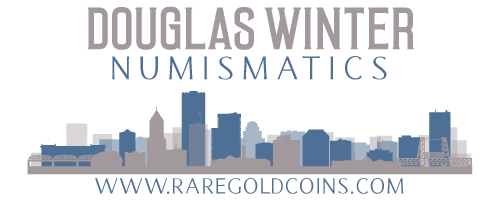Finally...An Appeciation for San Francisco Gold Coinage (?)
/After decades and decades in the dumps, it looks like there are small signs of life in the San Francisco gold coin market. But the activity in this market area is sporadic, to say the least, and is being led by exactly the sort of coins that you wouldn't think would be the pacesetters. There are plenty of overgraded, unappealing high priced San Francisco gold coins on the market right now. You haven't been able to give these away for years. You still can't. San Francisco gold coins that are faux-rarities, uninteresting dates or processed with no eye appeal are impossible to sell.
The coins that are suddenly selling have three things in common:
1. They are genuinely rare dates and most are either from the Civil War era or the years right before the war (i.e., 1858 through 1860).
2. They are well-worn but problem-free coins in the VG to VF grade range. These are true collector coins and this little renaissance of interest is obviously collector-based.
3. They are in PCGS holders. There are a few exceptions to this rule but the people buying these coins seem to want PCGS graded coins. This may be because they are forming Registry Sets.
The denominations that seem to have generated the most interest are half eagles and eagles but from time to time a quarter eagle is included as well.
The recent Heritage Central States auction included a few early, rare San Francisco gold coins that nicely illustrate this new trend. Let's take a quick look at each.
The first was Lot 3476, an 1862-S quarter eagle that was graded F15 by PCGS. This is a rare date in all grades with just 8,000 struck. It sold for $1,092.50 against a Trends value of $550 in F12. Why did it sell for double Trends? The reason is obvious: Trends is way too low for a coin as rare as this. I would have figured it was worth around $700-800 but even at a shade under $1,100 I think its great value.
The second example was an 1859-S half eagle, graded VF25 by PCGS and sold as Lot 3633. It brought $2,323 against a Trends of $1,200 in VF20. I figured it was worth around $1,500-1,750 and actually sold it to the consignor recently for a figure in this range. This coin had a number of things going for it. It was in an old green label holder and it was really nice for the grade. It is a rare, seldom seen issue that is very expensive in higher grades (I sold the second finest known late last year, an NGC MS62, for over $25,000). When you do see EF and AU examples they tend to be pretty yucky quality-wise and at around $2,500 this coin was a fantastic bargain.
The third example was a little bit of a surprise to me: an 1866-S No Motto half eagle in PCGS VF35. Offered as Lot 3636, it brought $3,220 against a Trends of $1,600 in VF20 and $4,250 in EF40. Although this is a numismatically significant date as the final No Motto half eagle from this mint, it is much less rare than the 1859-S and I wasn't really wild about the coin from a quality standpoint. Also interesting was the fact that this date is sometime seen in lower grades, unlike the 1862-S quarter eagle and the 1859-S half eale which are extremely arre in grades below EF40.
Now I know that three auction records do not exactly constitute a full-blown trend but this is not a totally isolated series of incidents. I know that when I have an interesting lower grade San Francisco half eagle or eagle that is affordable and seemingly good value, it typically sells quickly and often well in excess of current published values.
I have noticed that Trends (and Greysheet) values for lower grades (Fine and Very Fine) are way out of whack with reality. Often times, these numbers are years old and have not been changed since gold was priced at below $500 per ounce. Think about it: a coin like an 1862-S quarter eagle in Fine at $550? That just seems like absurdly good value. And coins like this are likely to stay undervalued, at least according to price sheets, due to lower collector activity than silver coins from this era. Enough F12 1862-S Dimes trade that it is possible to have an idea what such a coin is worth. But an 1862-S quarter eagle in this grade? You are talking about a coin with a population of just a few pieces and if two people care about such a coin at any given time, prices at auction can run up quickly.
I'd like to thank Jason Carter of Carter Numismatics in Tulsa OK for suggesting this topic and pointing out this market trend to me.













